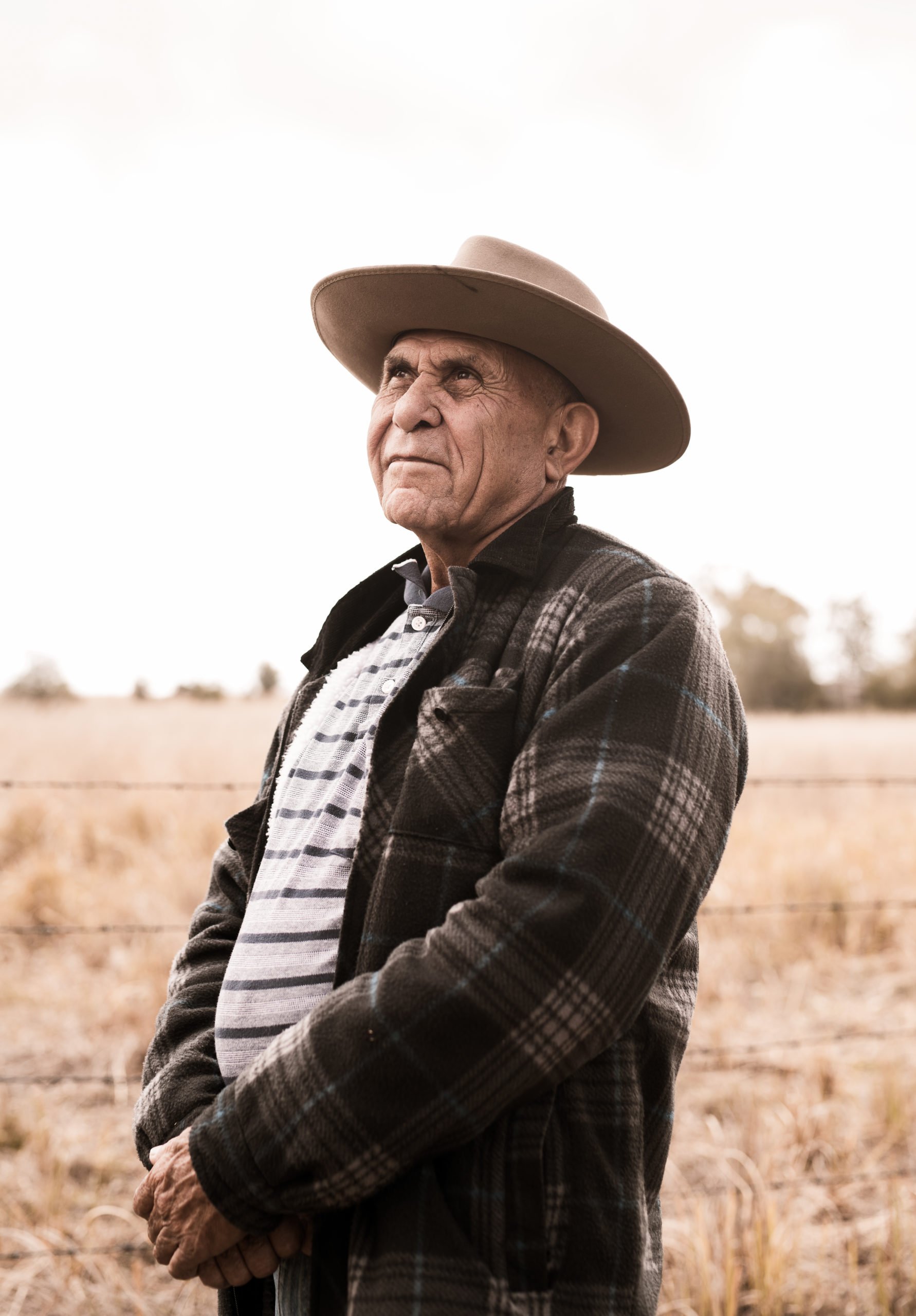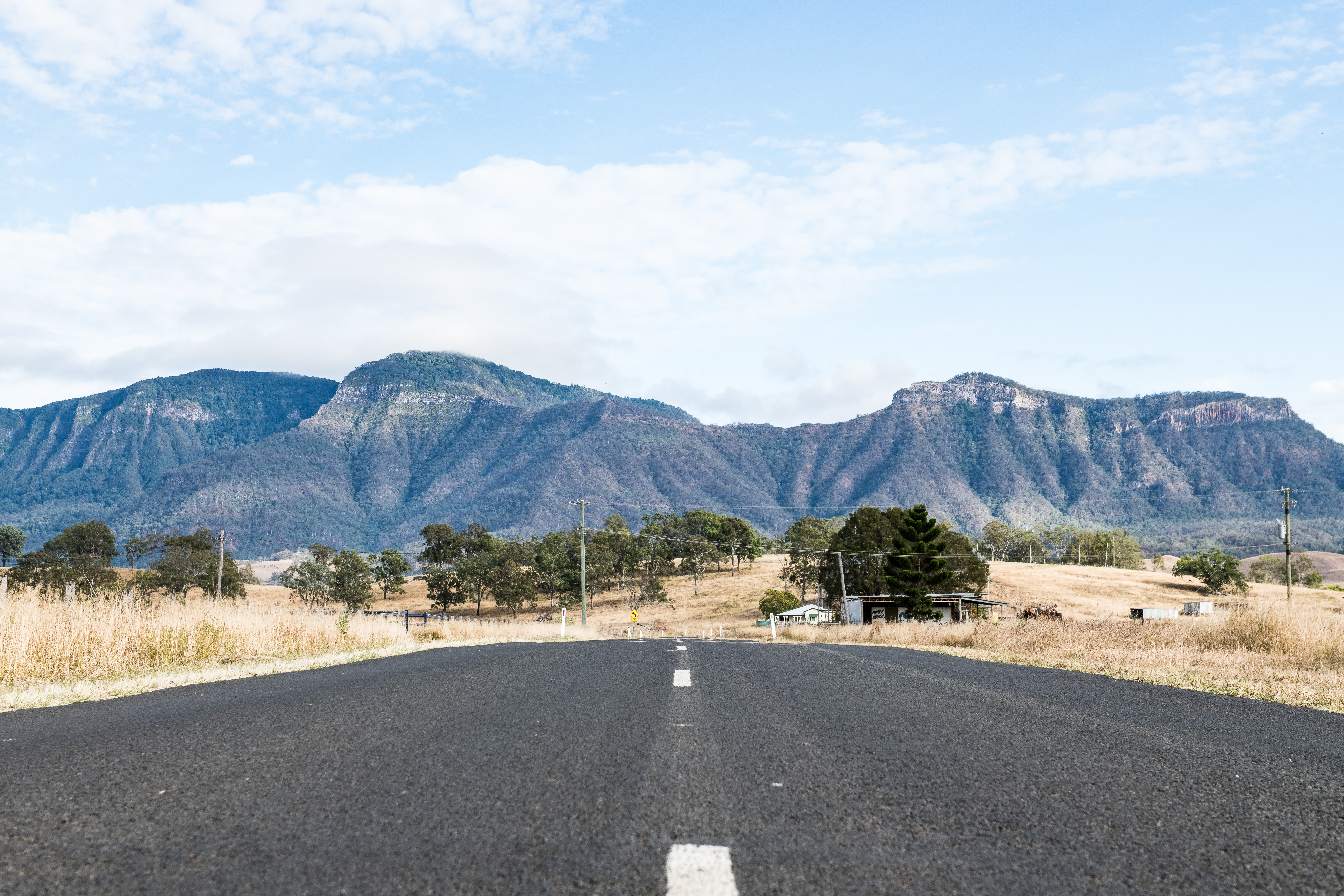Out on a rim – 700km on foot in south-east Queensland

The sound comes again in the darkness, closer this time.
A thick, guttural grunting that – given its resonance – must originate from a truly cavernous chest. There is no one else here, and we are 25km – a full day’s walk – from Aratula, the nearest town.
On the road for 15 days now, Carin and I are camped high up at Spicer’s Gap, at the far western edge of Queensland’s Scenic Rim. Formed by three separate volcanic events that created the ring of mountains that lend it its name, the Rim is normally a tranquil green realm, dotted with farms and pleasant, bucolic towns. But it contains many secrets not found in the tourist brochures, and is steeped in Indigenous history.
The sound gets louder, seemingly just outside the tent, yet I cannot hear any footfalls disturbing the dry brush around us. It is surely too big to be an arboreal creature…the sound is a cross between a wild pig and a tiger, with something utterly alien lodged within its repetitive bellow.
Something Uncle John Long – the Ugarapul Elder from whom Carin and I have learned so much – told me recurs. I’d asked him if there were places we shouldn’t go, out of respect.
‘There are places you don’t go, because of what those places are…our old people knew, and they passed it on. Places of darkness. Your heart is your shield, and you don’t let it down; it will protect you from the dark spirits, and you will go through their portals, but if you go with a good heart, they can’t touch you. You go with the utmost respect, and humility, because people have died in those places…’

Possibly at the hands of whatever is making that noise.
I know Carin slept through the creature’s first performance an hour ago, because her snoring – dwarfed by this approaching monstrosity – had not ceased. This time I can tell by her breathing that she’s lying awake, still as stone, and presumably terrified. Suddenly the bestial grunts cease, leaving a silence that is worse because we don’t know where its creator is.
“What is that?” she whisper-screams. So far we’ve yet to encounter a situation where I didn’t have some sort of solution or answer that would ease her mind. This time I’ve got nothing. But Uncle John does, speaking again from my memory.
‘…up at Spicer’s Gap is one of those places of darkness. There’s a spirit up there, a dahdahngun, and she whispers to you, tells you to jump off the cliff…’
Earlier this evening we had sat at Governor’s Chair, a rocky outcrop commanding unparalleled views of the Scenic Rim. Refreshingly, in this hyper-anxious, mollycoddling age, it is an unfenced cliff above a very long drop into dark green rainforest, far below. A sign simply reminds the traveller to assume personal responsibility and not fall off.
As Carin took shots of the sunset-washed land, I’d thought of all the roads that led us here…starting with my own, Macdonnell Road on Tamborine Mountain. Known to the old-timers as the Do-It-Yourself Road, in 1958 the townsfolk had tired of waiting for the Government to put in a road to the Gold Coast, and through a combination of fundraising, volunteering and four locals with roadbuilding knowledge, put the road in themselves. But Macdonnell Road also follows an ancient route of connection for the First Peoples, between saltwater and freshwater country.
This intertwining of the two cultures – a black and white braid – formed the basis for this adventure. So Carin and I had set off, following the road – another black and white braid – on what would be a month-long, 700km journey along 183 roads around the place we call home, to discover who the roads were named for, who walked them first, and who walks them now.

It’s amazing where the Braid can lead you. We’d been granted access to Canungra Land Warfare Centre, normally off-limits to civilians, where we’d uncovered the story of Thomas John “Massa” Clarke, an Indigenous soldier who served with distinction in every campaign from WWII through to Vietnam, a legend unknown to the wider world.
Then there was the Marian Valley Monastery and Shrine, nestled in the Witheren woods. Built entirely by volunteers and monks over the past 25 years, it is an outpost of the Order of Saint Paul the First Hermit, which dates back to Hungary in 1308…Paul himself a 2nd-century hermit living in the Egyptian desert.
Further we walked, into the eerie Antarctic Beech forests of Lamington National Park – moss-covered relicts of a continent that no longer exists, Gondwana. When these 3000-year-old trees first started coppicing, it was the Bronze Age, and the Phoenicians were establishing an alphabet they wrote on clay or papyrus, the invention of paper still being centuries away. To touch their gnarled bark is to touch time.
We’d followed the Border Track, a route originally surveyed in 1863–66 by Francis Roberts to separate NSW and QLD. Less well-known were those who accompanied him: Bilin Bilin and his Mob, who ensured Roberts’ survival and supplied him with the names of the mountains they traversed, Wagawn, Wanungara, Hobwee, Toolona, Bithongabel, Worendo, Throakban.

We spent two days on no road at all, other than that of our own making, climbing Wahlmoorum (Mt Maroon), the Sand Goanna. As Uncle John told us, the mountains were where the young Mob were tested and initiated, and our experience on Wahlmoorum’s dense wilderness proved to be just that; if not for a chance discovery of a small pool in a dry waterfall bed, we’d have been out of water for over a day, and in trouble.
The lack of water in the Rim is a result of the worst drought in living memory. The farmers who have welcomed us into their homes and lives are barely hanging on, and the tinderbox conditions have dire implications. Soon we’ll be walking through what will become known as the Black Summer, which will claim 186,000sq.km of the Eastern Seaboard, including the historic Binna Burra Lodge, where we stayed only 10 days ago.
Sitting at Governor’s Chair, the midway point, we can see not just where we’ve been, but where we have yet to go; the arid northwest, the Rim’s Bible Belt, where folks were once baptised by moonlight in Urarrar (Bremer River); the deep lagoons near Beaudesert where the warrajum – the Bunyip – resides; the flatlands of Dahgalumba (Logan River) where, 150-odd years ago, Queensland’s first “blackbirded” South Sea Islanders were brought to work the cotton fields, and where their descendants will walk us through this nearly unknown story of cultural disconnection.
But that is why we walk, so that we can reconnect with these things.
‘My traditional name is Burragun,’ Uncle John had told us. ‘It has a few meanings, but one is ‘messenger’. My father told me that one day I would have to bring our cultural message to people; not just my people, but to all people…to people like you, because I can see you listen with your hearts. Then, you become the messengers.’
Provided we make it out alive.
The noise returns, closer still – then, horrifyingly, it is joined by another, and I wonder whether there is a pack of them assembling, surrounding the tent, drawn to the scent of human flesh. I reach down and ease the big knife out of the sheath, not wanting to make any noises that will alert them.
‘My mother’s great-grandfather had the power to parlay with the dark spirits,’ Uncle John whispers from my memory. ‘They’re not human; they’re spirits that have been here forever, a spiritual darkness. My mother remembered one night, when there was a sick girl lying by the fire, how the old men and women stood at the edge of the light, battling with the dark spirits that wanted to take her. Telling them they wouldn’t let them have her…’
“Are we going to be okay?” Carin whispers. I tell her yes, but the bond we have forged during the journey means she is well aware of my unease. I think of my responsibility to her. Widowed at just 36 with a young son, Oliver, I promised her family (and myself) that I would get her home safely. She is tough – has carried 18kg of camera equipment all this way – but then, the road she was on before this was tougher, nursing her husband through the final years of his life. This journey has been cathartic for her…but as the bellowing reaches a frenzied crescendo outside the flimsy skin of our tent, I wonder at what cost.
We have to get up at 4am to climb back up to Governor’s Chair for the dawn shoot…a journey that will have to be made in the dark.
Out there, with whatever is making that noise.
There will be no more sleep for either of us this long Spicer’s Gap night, here at the edge of the Rim.
To find out the source of the noise, buy a copy of The Black & White Braid, on sale April 10.




